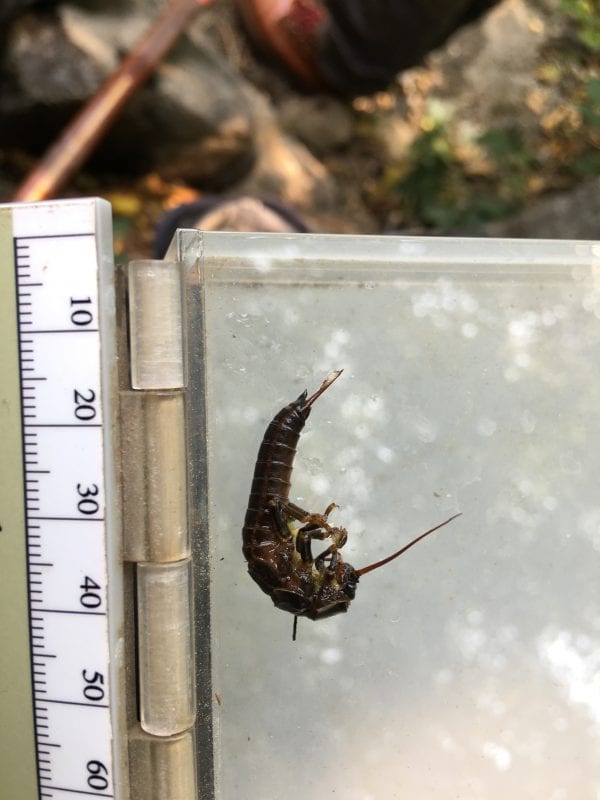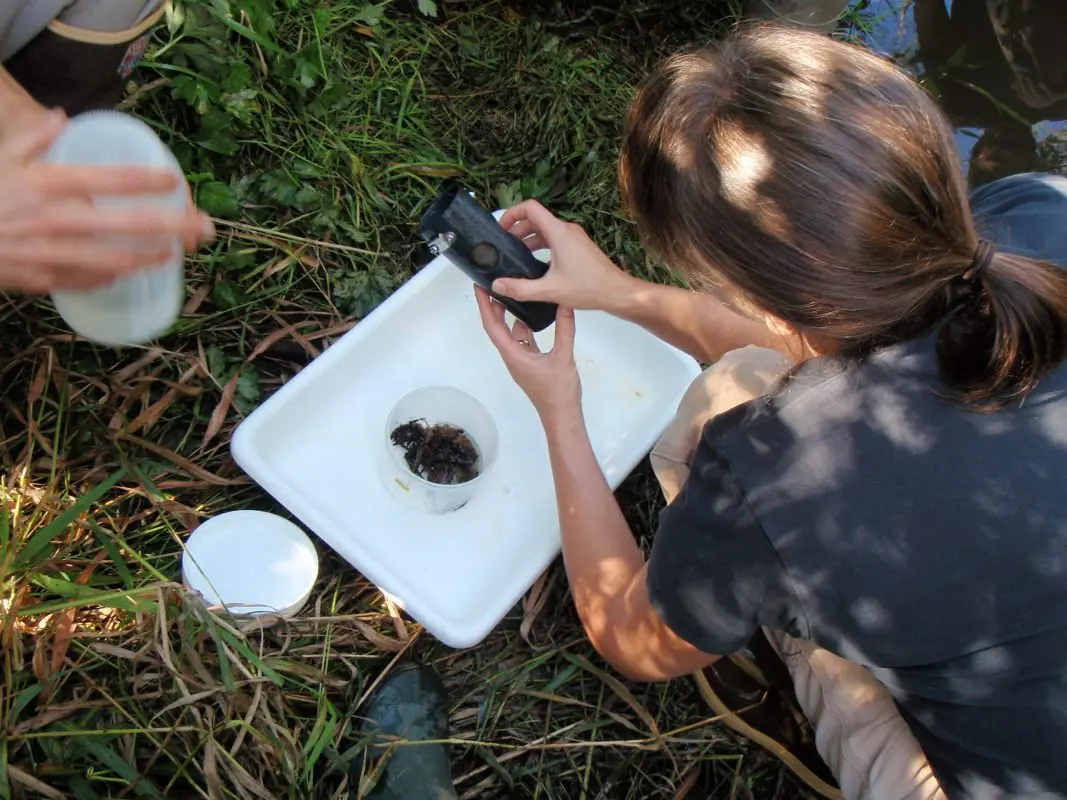
Macroinvertebrates are tiny insects that live in streams and are a food source for many fish and other aquatic organisms. Most energy or nutrients are derived outside the water body, and macroinvertebrates collect and convert most of this energy into available forms used by other inhabitants of the stream. Macroinvertebrates are grouped into four “functional groups”: grazers, shredders, collectors and filter feeders, and predators. Grazers feed on algae that grow on rocks, wood and other streambed materials. Shredders eat the leaves and detritus that fall into the stream, converting the nutrients into energy for other aquatic life such as salmon. Collectors and filter feeders feed on minute particles of organic matter carried in the water column. Predators feed on other aquatic insects.
Macroinvertebrate species differ in their tolerance to pollutants, temperature and other physical and chemical stressors. Therefore, monitoring the numbers and diversity of these species can tell resource managers a great deal about the overall health of the stream and indicate trends in ecological conditions. Typical water quality and habitat assessments tell us about conditions in a stream at a point in time. Macroinvertebrates are long-term, relatively immobile inhabitants of streams. This fact, coupled with their predictable responses to environmental changes, make macroinvertebrates good indicators of current and past stream conditions.
Macroinvertebrate Studies
City of Bellingham staff first collected macroinvertebrate samples in the Squalicum Creek, Whatcom Creek, and Padden Creek watersheds between 2001 and 2003. With grant funding from the Department of Ecology, these samples were analyzed by the Institute for Watershed Studies at Western Washington University. Results from this round of macroinvertebrate sampling are summarized in the Urban Streams Monitoring Program Report (PDF), which was published in September 2006. Additional macroinvertebrate samples have been collected in Bellingham’s streams on a project basis, and in 2017 the City initiated an annual program of macroinvertebrate monitoring.
Annual Macroinvertebrate Monitoring Program

City of Bellingham Public Works Natural Resources Division collects annual macroinvertebrate samples in all of the major streams within the City limits. The objective of this ongoing program is to assess aquatic macroinvertebrate populations in order to characterize the health of our urban streams. Long-term and systematic monitoring of macroinvertebrate population trends will provide a measurable indicator of stream and watershed health over time.
Sampling methods follow standard protocols as recommended by the Washington Department of Ecology (Larson 2018) with minor modifications. At each location, a Surber sampler (500 micron mesh, 2-square-feet delineation frame) is used to collect four samples: one sample will be collected from each of four different riffles, working downstream to upstream, for a total composite sample area of 8 square feet. Samples are then preserved and sent out to a private lab for taxonomic identification. Routine annual sampling began in 2017.
All macroinvertebrate data collected in City of Bellingham streams is available on the Puget Sound Stream Benthos website.
